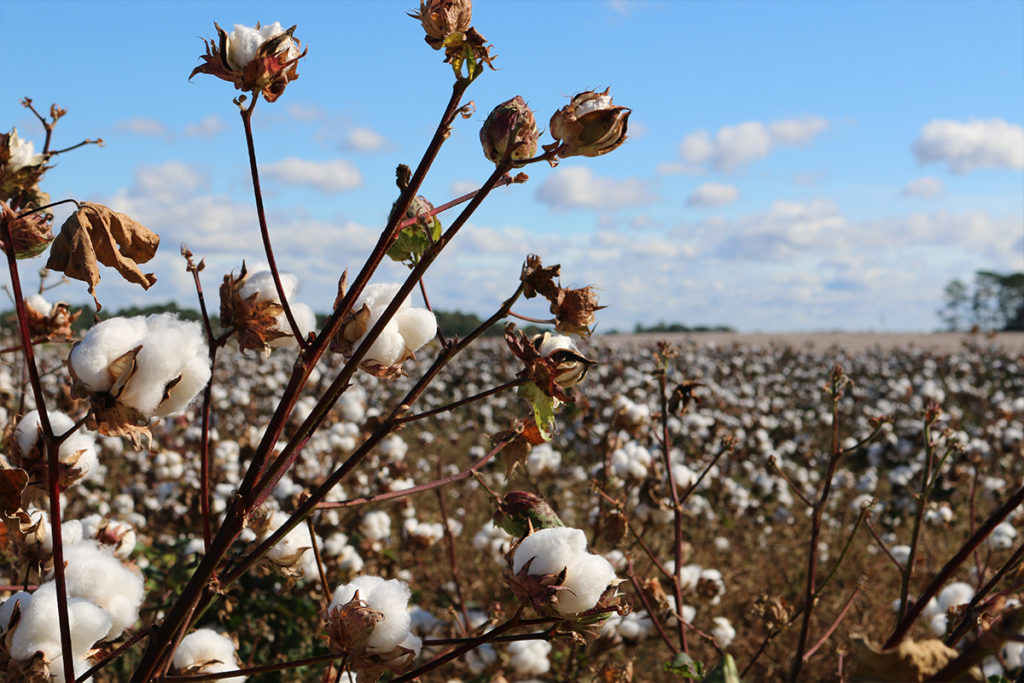When we think of our personal impact on the climate, and how we might lighten it, we often turn to the energy we use and the way we travel. Fewer people turn their minds to the underwear billowing on the clothesline.
The global fashion industry is a large contributor to the climate crisis and reducing its impact is a necessity like any other. The industry belches out 1.2 billion tonnes of CO2 equivalent per year, more emissions than the shipping and aviation industries combined! And a 2021 report from the World Economic Forum identified fashion, and its supply chain, as the planet’s third largest polluter (after food and construction), releasing 5% of the world’s greenhouse gas emissions.
So the fashion industry’s impact on climate change is titanic, but where are these emissions coming from? To find out you have to look along the supply chain. The supply chain is a set of connections that winds its way backward from your wardrobe through to retail, to transport and shipping, to production and processing, right back to the beginning of the line: to the raw materials, such as cotton and polyester, from which our clothes are made. By looking at the supply chain, we can separate each sector by its reliance on coal, oil, and gas: the fossil fuels that principally cause climate change.
Some links are responsible for more emissions than others, such as freight over the laundering of your clothes, but along the entire chain one link towers among the others…
Polyester, cotton, and the impact of fibres on climate change
It might surprise you to learn that among all the aspects of fashion—from production to transport—it’s the fibres that are most responsible for emissions. Around two-thirds of the carbon footprint of a garment comes from the production of its fibres.
Specifically, the impact stems from our over-reliance on synthetic fibres (composing 65% of clothing), which outstrips our preference for cotton (at 21%). Synthetic fibres, mainly polyester and nylon, are non-renewable and are derived from fossil fuels—namely crude oil. In fact, an estimated 342 million barrels of oil are used each year in the production of synthetic fibres.
Can’t cotton help?

Considering synthetics are less than ideal, why don’t we just switch? Apart from synthetics being cheaper and more widely available, the obvious alternative is cotton, but cotton comes with its own environmental costs. Cotton requires a lot of water and often needs pesticides as well as fertilisers. Fertilisers themselves are a carbon-intensive product (with one estimate suggesting that one tonne of nitrogenous fertiliser produces seven tonnes of CO2).
Recycled and reclaimed fibres
One way to offset these emissions is with recycled and reclaimed fibres. Rather than a ‘linear’ production chain, where textiles are produced, worn, and discarded, a ‘circular’ production chain is adopted. Here, after a textile is used, rather than being sent to the incinerator, it is reintroduced into the supply chain where it becomes a part of another garment; my blouse is your blouse. There is a difference between being recycled and being reclaimed.
- Recycled: When a product is recycled it is reduced to its components (e.g. a polo shirt into synthetic fibres), which are returned to the cycle (re-cycled) where they’re free to reincarnate as anything composed of synthetic fibres.
- Reclaimed: When a product is reclaimed it remains in its final state and, rather than being reduced to its components, is re-used for its inherent qualities, i.e. denim jeans being translated into a denim backpack.
While this solution is promising, it requires the installation of systems to intercept the textiles before they’re discarded, have them processed, and then have them returned to an appropriate point in the supply chain—one that is specialised for working with recycled products.
Big brands and the ‘Fashion Industry Charter for Climate Action’
In 2018 many of the primary stakeholders of the fashion industry—and some of its biggest names—came together under the UN’s banner to release the ‘Fashion Industry Charter for Climate Action’.
The charter was a first for fashion and its impact on climate change. It placed the goals of the Paris Agreement at the forefront, goals such as “limiting global temperature rise to well below two degrees Celsius above pre-industrial levels”. Work following from the charter divided the task of decarbonising the industry and reducing its greenhouse gas emissions into distinct parts, such as: changing government policy, addressing raw material production, and partnering fashion brands with climate action groups.
Following the charter, some of the initiatives and achievements include:
- Levi, Strauss & Co. announcing that by 2025 they will reduce the greenhouse gas emissions of a) their own facilities by 90%, and b) those of their entire supply chain by 40%.
- H&M establishing a plan to be run on 100% renewable energy by 2040 and use a fully circular production model.
- Initiatives such as Green Fashion Week and X-Ray Fashion that demonstrate how leading designers are moving towards sustainability.
- One of the latest initiatives—the Conscious Fashion Campaign—comes from the UN’s Sustainable Development Goals.
While garment producers are making changes to those factors they can control, it’s important to remember that this is a relationship. There’s yet another way to help the environment and combat climate change and it’s also powerful: culture.

Shifting our culture from fast fashion to slow fashion
Indeed our attitude towards fashion, our consumer behaviour, can change quickly—but recently it’s been for the worse. Between the years 2000 and 2014 the world’s production of clothes more than doubled, and this wasn’t just a response to a growing population (which only increased by a fifth), it was a symptom of a new culture of ‘fast fashion’. Fast fashion is the result of manufacturers trying to satisfy the world’s appetite for quick, dirty, and cheap clothing, while at the same time fuelling this appetite. It’s a vicious cycle.
How did fast fashion happen?
Like running on a treadmill that can only accelerate, the relationship between producer and consumer has sped out of control. Consumer demand has been artificially stoked by producers through the use of technologies like online shopping, which rewards impulsive and excessive purchases and which has a growing audience in the middle class. Further encouraging consumption, the fashion industry has stigmatised outmoded clothing, with exclusive and limited releases driving up ‘snap purchases’, as well as provoking a desire to own products straight from the catwalk. And while the fashion year was once divided into two seasons—autumn/winter and spring/summer—it has since fractured into fifty-two ‘micro seasons’, with new lines dropping each week.
Fast fashion has increased the volume of clothing, but also transformed our relationship with it. Clothing is more disposable than ever. Today, people keep their clothes for only half the time as they did in 2000. And stats of this waste are disturbing: one garbage truck of textiles that are incinerated or dumped in landfill every second. Each year the world discards enough clothing to fill Sydney Harbour with the waste.
Leaning in to slow fashion
Fast fashion is new but it was born from a culture that can, with equal swiftness, reverse its destructive ways. Slow fashion is the name of the philosophy and its charity towards the environment can be adopted by anyone at any time.
- Don’t buy so much. And make sure the clothes you do buy are made to last.
- Trade clothes with friends and family and buy second hand.
- Scrutinise your shopping decisions online: what are they made of? Is any of the fabric re-used, and how long might they last?
- Take care of your things: smell them—do they need a wash every single use? Don’t wash on high heat, air-dry instead of dry clean.
- Mend your clothes, sell them, swap them on a Facebook group.
Protecting the atmosphere and curbing the fashion industry’s impact on climate change involves everyone, producer and consumer alike.
The Australian Government has a responsibility to reduce its greenhouse gas emissions and set a goal of reaching net zero, to which we urge them to Aim High and Go Fast: to reduce emissions by 75% below 2005 levels by 2030 and reach net zero emissions by 2035.